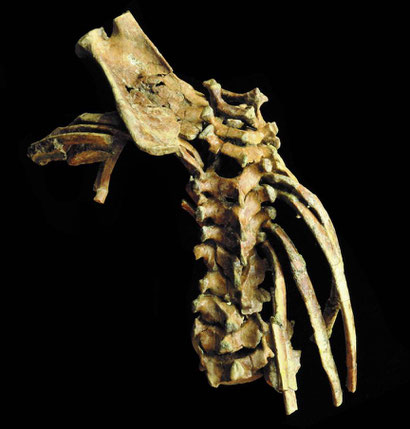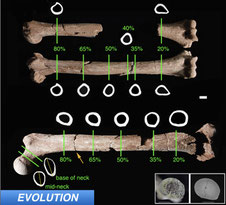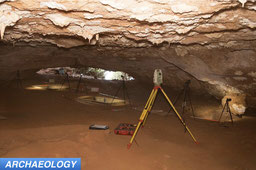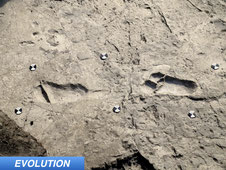
The remains of an Australopithecus afarensis that died in infancy are yielding clues about the evolution of the human spinal column. The infant, named Selam by researchers, lived over three million years ago, died at the age of 2 1/2 years, and according to a new study published by *Ward et al, has an unprecedented amount of spinal preservation.
Like many attributes of the hominin body, the spinal column began to change when our early ancestors started walking upright. However, specific spinal changes through time have been difficult to document because of the scarcity of vertebrae and ribs in the early fossil record. Selam is a unicorn because, as **Ward et al. state, the find “…provides the only known complete hominin cervical and thoracic vertebral column before 60,000 years ago.” Complete lumbar vertebral sets have been found before (lumbar vertebrae being those in the lower back, thoracic in the middle, and cervical the neck). So, according to Ward et al., here’s what we knew before Selam, what we didn’t know before Selam, and what we’ve learned from Selam.
We knew that Australopithecus africanus, sediba, and Homo erectus had points of articulation between vertebrae that transitioned from thoracic-like forms into more lumbar-like forms before the last rib in the sequence. In most modern humans and African apes, the thoracic to lumbar transition occurs in the vertebra that articulates with the last rib in the sequence - thoracic vertebra number 12 for humans. What we didn’t know was how many thoracic vertebrae Australopithecines had, whether it was the same number as modern humans (12) or the same as our African ape cousins (13). What we’ve learned is that Australopithecines had 12 thoracic vertebrae like modern humans, and that the thoracic to lumbar transition occurred on the next to last thoracic vertebra (number 11) unlike modern humans.
Ward et al.’s work was published online this week in the journal, Proceedings of the National Academy of Sciences.
The More You Know.
*Ward, Carol, V., Thierra K. Nalley, Fred Spoor, Paul Tafforeau, and Zerensenay Alemseged. “Thoracic vertebral count and thoracolumbar transition in Australopithecus afarensis” Proceedings of the National Academy of Sciences of the United States of America. Published online before print on May 22, 2017. DOI: 10.1073/pnas.1702229114.
**Quote: Ward et al. 2017 page 1, abstract, sentence 6, line 10.



